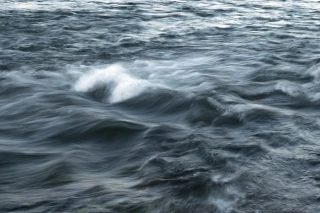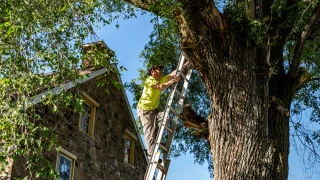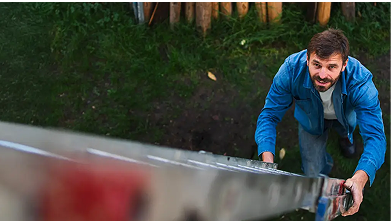In Québec, we’re lucky to have thousands of lakes and rivers where we can go swimming, paddling and fishing. But when you’re near a dam, those peaceful surroundings can be deceiving. Take a dip in the wrong spot, paddle a little too close or take one step too far to get that perfect shot of the scenery, and what was meant to be a peaceful outing could suddenly, and tragically, cost you your life.
Dam operations that affects the currents
The water near hydropower facilities may seem calm, but the danger is real. Although invisible at the water’s surface, the currents created by spinning turbines are extremely powerful.
The action of turbines downstream from a hydroelectric generating station creates strong currents that are often invisible at the surface, yet extremely powerful.
Spillways are used to release excess water. When the gates open, the water level downstream can rise quickly. In just a few seconds, a shoreline or rock that was accessible can become submerged, and so can you.
Sudden, invisible and uncontrollable dangers
The equipment at a hydropower facility can start up at any moment, without warning. When that happens, the speed and strength of the current can:
- Capsize your vessel
- Pull you toward hazardous zones or structures, such as a spillway
- Drag you under
Even an Olympic swimmer couldn’t fight currents that strong. Anyone in that situation could drown.
Upstream and downstream: What it all means
Imagine a river that flows towards a generating station or dam. The upstream part of the river is before the dam, where the water level is generally higher, and the downstream part of the river is after the dam, where the water level is lower.
Both upstream and downstream of a generating station, the possibility of drowning is real.

Lines that should never be crossed
To signal danger and prevent accidents, Hydro‑Québec installs booms, warning signs, and fences. It is essential to recognize these clear visual markers and, above all, never cross them. Each plays a crucial role in marking high‑risk zones around the facilities.
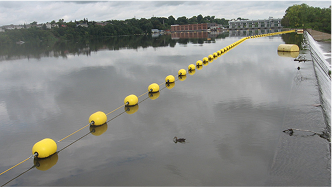
Booms
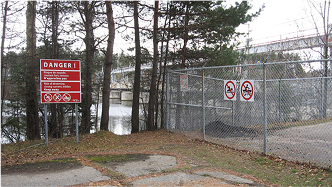
Gates and fences
Never compromise safety
- Stay far away from hydropower facilities.
- Never cross boom lines or fences, and always follow the rules posted on signs.
- Explain the risks, especially to children and teenagers. And if you can, don’t hesitate to speak up if someone gets too close.
- When in doubt, back up. If you aren’t sure an area is safe, don’t go there.
Ouvrons l’œil hotline If you observe any hazardous situation near our dams, don’t hesitate to call 1‑877‑816‑1212.
In case of emergency, dial 911 immediately.
Enjoying water safely sometimes means keeping your distance
Around bodies of water, a step too far, a moment of distraction or a misstep can be the difference between life and death. Being careful doesn’t mean you can’t have fun. On the contrary, by being careful, you can have fun now and in the future.
